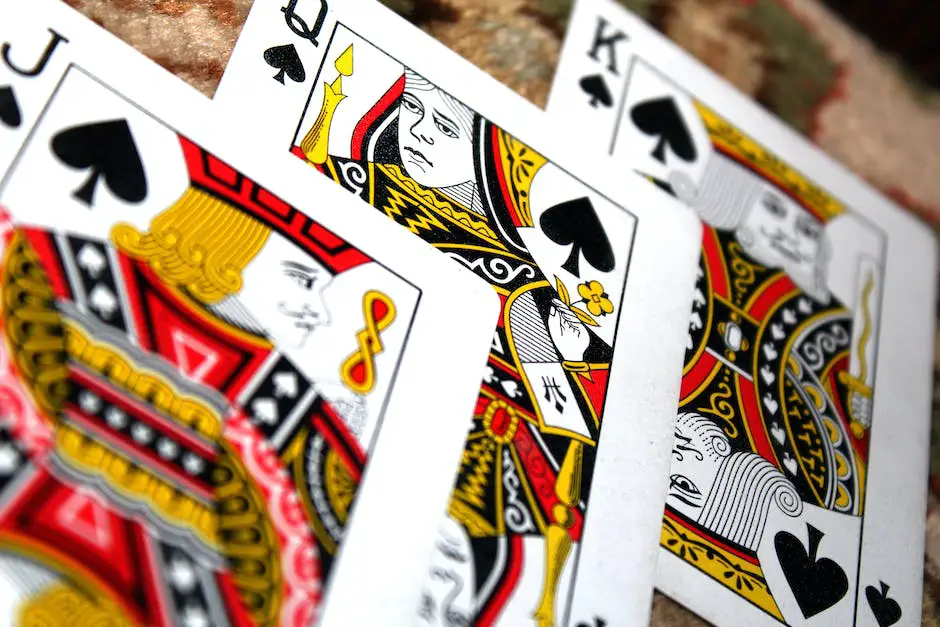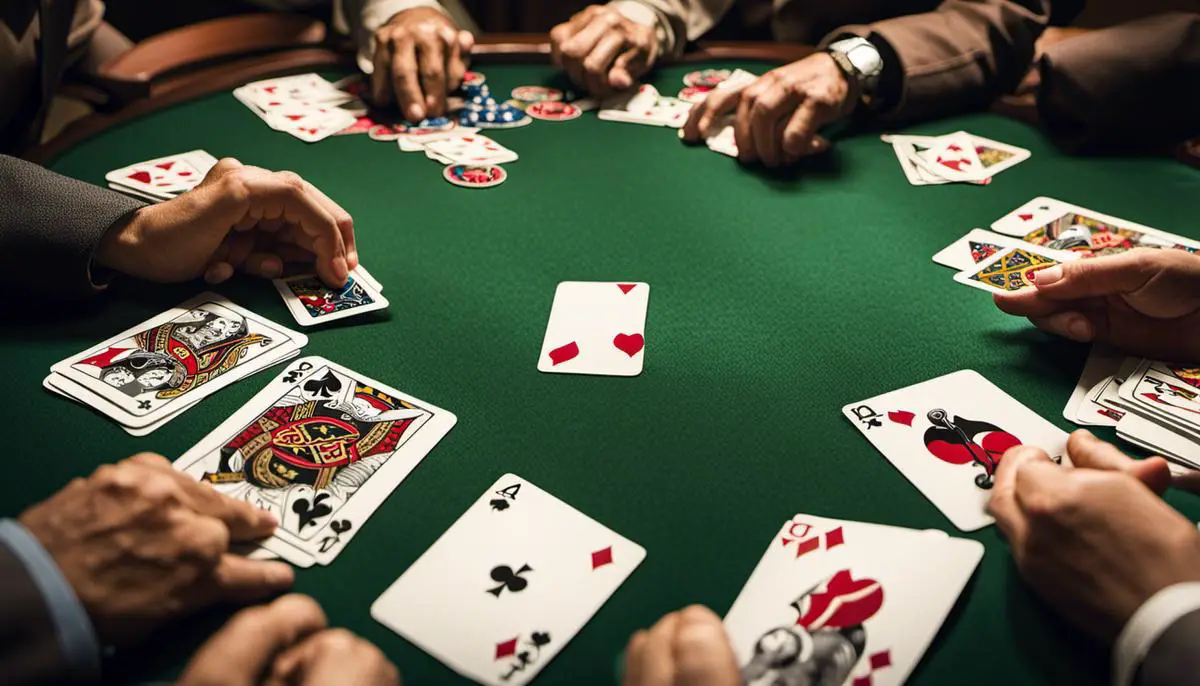Embarking on the engaging world of Mau games requires not only an understanding of the essence of the game but also a deep knowledge of its strategies, decorations, and moves. In this quest to delve deeper into the Mau universe, we begin by familiarizing ourselves with the fundamental elements and rules of the game. From understanding the basic concepts, learning about the deck setup, grasping the game start procedure, to illuminating the roles and moves of each player, the journey proves to be just as exhilarating as the game itself. As we dive into the pool of advanced Mau strategies, we come across the powerful special cards and their functions which can potentially alter the course of our game when used effectively. If it’s the thrill of the challenge you seek, come join us on this fascinating expedition.
Understanding the Basics of Mau
Understanding the Basic Concept of Mau
Mau is a popular card game with the objective of being the first player to get rid of all the cards in your hand. The game can be played by almost any number of people but works best with 3-6 players. Rule changes take place each round, making it a dynamic and challenging game.
Deck SetupFor Mau
There’s no standard number of decks to play Mau. Some play with a single deck of standard playing cards, while others prefer multiple decks shuffled together for large groups and long games. The dealer shuffles the cards and deals an equal number of cards to each player. The surplus cards are placed in a stack face down. The top card from the stack is turned over to form a discard pile, and the game commences.
Procedure to Start a Game of Mau
The player to the left of the dealer kicks off the game and the gameplay moves in a clockwise direction. The first player must throw a card on top of the discarded pile, following the same suit or value as the upturned card (i.e. If the upturned card is a diamond, the player must discard a diamond or same-numbered card). If the player does not possess a corresponding card, they must have to draw a card from the pile.
Roles and Moves in Mau
Each player, on their turn, can either play a card from their hand or draw from the deck. The card played must match either the rank or suit of the top card of the discard pile unless the player can play a ‘wild’ card (in some versions of the game). If the player cannot play a card, they must pick up a card from the deck.
Players must remember to say “Mau” when they play their second-to-last card. If a player forgets to say “Mau” before the next player takes their turn, they will need to draw a card.
An essential part of Mau is that you are not allowed to explain the rules as you go. Players should learn through observation, inference, and punishment for rule violations, which is usually having to draw more cards.
Rule Changes in Mau
What makes Mau exciting and unique is its living and evolving rules. At the beginning of each round, the winner can make a new rule. It could be anything from “No talking” to “Everyone must swap hands”. The creative and unpredictable nature of rule-making adds an extra layer of challenge and entertainment to the game.

Advanced Mau Strategies
Understanding Advanced Mau Strategies
Mau is a fun, fast-paced game that involves strategic thinking, quick decisions and remembering complex rule sets, and it becomes even more intriguing when you start using advanced strategies and special cards. Below are a few strategies that might enhance your game.
Knowing Your Cards: The Role of Special Cards
In Mau, the special cards are the 7, 8, King, and Ace. Each has unique functions: 7 allows you to play again immediately, 8 forces the next player to skip their turn, King allows you to change the active suit, and Ace can either be played as a normal card or to respond to a special card. Knowing these capabilities will help you to strategically plan your moves.
Making the Most of Power Cards
Power cards are those that force the next player to draw cards. These include 2, forcing the next player to draw two cards, and Queen, forcing the next player to draw five cards. Utilizing these power cards effectively can make your opponents accumulate cards and limit their options.
Utilizing Special Cards During Game Rounds
It is crucial to use special cards effectively during game rounds. For example, playing an 8 to skip the next player’s turn can disrupt their strategy, while using a 7 allows you to swiftly reduce the number of cards in your hand. Using a King allows you to change the active suit, potentially to one that suits your hand better.
Forming Winning Strategies
Understanding the function of each card is vital to forming winning strategies. A typical winning strategy could be to hold onto your power and special cards until later in the game, saving them for when they could have the most impact. For instance, using a King or Ace when the draw pile is the smallest can drastically limit the next player’s options. Alternatively, using a 2 or Queen at a strategic moment could force the next player to draw the remaining cards, pushing you into a winning position.
Importance of Flexibility
In Mau, the rules will differ depending on who is the dealer, and they can even change within a single game. Maintaining an adaptable strategy and being prepared to alter your approach in reaction to rule changes is an essential aspect of advanced Mau play.
Wrap Up
Finally, remember that every card in your hand is a tool that can be used strategically. Consider the cost and benefit of each play. Always anticipate the moves of your opponents and adapt your strategy accordingly. Mau is a game of wit, strategy, and adaptability; mastering these aspects of the game will provide you with the upper hand.

Practicing Mau Games
Understanding Mau Card Game
Mau is a card game with the objective of getting rid of all the cards in your hand first. It’s a game with ever-changing rules, making every round a new and unique experience.
Primarily, you should understand that the base rules of Mau revolve around matching the top card of the play pile either by number, color, or suit, depending on the variant you’re playing. If you’re unable to match it, you would have to draw a card or face a penalty.
Playing with Friends or Online
One way to practice Mau is with friends. Start with a small group, as it is a bit easier to manage with less players. After everyone understands the base rules, you can then start adding new rules. When a player wins a round, they get to add a rule of their own. This is what keeps the game fresh and interesting.
Online platforms also offer opportunities to play. Websites and apps like CardzMania, Trickster Cards, and others have Mau and its variants available to play for free. This allows you to practice with varying rule sets and against players with different strategies.
Developing Strategies
To win in Mau, you need to be alert and adaptable. Keep track of the rules in play and always be ready to adjust your strategy based on them. It’s important to not only focus on getting rid of your own cards, but also to pay attention to what the other players are doing.
One strategy is to hold off on playing cards that have significant effects until you can use them to disrupt your opponents or when they can help you get rid of more of your cards. Cards that reverse play direction, skip a player’s turn, or force others to draw cards can be powerful tools when used at the right moment.
Improving Game Play
Repetitive practice of Mau will improve your gameplay over time. As you keep on playing, you’ll become more familiar with potential rules and how to best respond to them.
Another way to improve is to analyze your games after you play them. Take note of what strategies worked well and which ones didn’t, and use this information to adjust your techniques moving forward. You can also observe other players, both when you’re in a game with them and when you’re just watching a game. See what moves they make and how they react to the changing rules. Use these observations to enhance your own game play.
Playing and practicing Mau can be a fun, exciting, and brain-stimulating activity. Remember, the aim of the game is to have fun, so enjoy the process of learning and improving.
Understanding the Game of Mau
The game of Mau, also known as Mao or Mau Mau, is a card game with elaborate and often changing rules that vary by region, local culture, and individual players. The game works best with groups of four to eight players and an ordinary deck of playing cards (Joker cards excluded). The fundamental goal of this game is to get rid of all your cards as quickly as possible.
Basic Rules of Mau
Each player starts with five cards. Remaining cards form a draw pile with the top card turned over as the discard pile. Players take turns discarding one card that matches the suit or rank of the top card on the discard pile. If a player cannot discard, they draw a card. Playing special cards such as 7, 8, or Jack will trigger certain effects, such as making another player miss a turn or forcing them to draw extra cards. The first player who discards all of their cards wins.
Competitive Mau Rules
In tournament-level Mau, the game’s appeal comes from its constantly changing rules, which can be challenging to keep up with. The rules of Mau are not disclosed to newcomers until they transgress them – and are then punished with penalty cards or other sanctions. The only universally acknowledged rule is this: the dealer , or ‘Mau Master,’ makes up the rules but must stick to them throughout the game. For each round, the Mau master can add, remove or change one rule.
Advanced Strategies of Mau
One of the key strategies in Mau is keeping track of the evolving rules. Pay attention to the instructions given after each penalty — these will offer clues about rule changes. Additionally, it’s important to anticipate the Mau Master’s moves and resulting rule changes, devise a strategy, and adjust it as you gain experience. Remember, the goal is not only to discard all your cards but also to do so while minimizing penalties — hence the need for strategic thinking and a good memory.
Competitive Difference from Casual Play
In a casual game of Mau, players commonly agree on a fixed set of rules before starting the game. However, in a competitive game, this principle does not apply. The Mau Master has full discretion over the rules, making it a game of unpredictability and constant adaptation. While it may be more challenging, experienced players often find competitive Mau more engaging and satisfying.
Using the Rules to Your Advantage
When playing competitively, you have the option to become the Mau Master if you win a game, allowing you to set the rules. Consider strategies that match your style of play and skills — for instance, if you have a good memory, you might introduce rules that require recalling previous plays. Additionally, remember that a critical part of Mau is masking your understanding of the rules, as appearing confused might discourage the Mau Master from adding more complex rules.

Captivating, isn’t it? A trip about the Mau universe. From the amateur to the professional level, every step proves to be a novel experience. Practicing the Mau games enlightens us about the flow, amplifies our strategies, and helps us enhance our gameplay. Furthermore, as we delve into the world of competitive, tournament-level Mau, the variance in rules from casual play becomes evident. The beauty lies in using these disparities as a leverage. So, whether you choose to play Mau online or in the traditional setup with friends, the road to mastering Mau games is not only full of excitement but also rich with knowledge. Embarking on this journey is the first step towards making every Mau game count. Let’s make the game, our game.
Frequently Asked Questions: Mau Card Game
A: Mau is a fun and interactive card game with a unique set of rules. Players aim to be the first to get rid of all their cards while following specific card-playing rules.
A: In Mau, players take turns playing cards that match the suit or rank of the top card on the discard pile. Additionally, players must follow secret rules decided at the start of the game.
A: The secret rules in Mau are decided by the game’s dealer at the beginning of each round. They can include actions like drawing extra cards, reversing play direction, or imposing penalties for specific cards.
A: Yes, players can customize the secret rules to create their own variations of Mau, adding excitement and surprises to the game.
A: Yes, Mau is a versatile game that can be played with various group sizes, making it suitable for both small gatherings and larger parties.
A: The first player to play all their cards and say “Mau” before anyone else wins the round. The game typically consists of multiple rounds, and the player with the fewest points at the end is the overall winner.
A: Yes, Mau can be played with a standard deck of cards. However, adding jokers or using specialized Mau decks can introduce more variety to the game.
A: Yes, Mau is known for its fast-paced and dynamic gameplay, where players must react quickly and think strategically to play their cards and avoid penalties.
A: Yes, Mau includes penalties for breaking the rules, which are usually determined by the secret rules set at the beginning of each round.
A: Mau’s rules can be adjusted to suit players of all ages, making it a suitable and enjoyable game for families and children.
